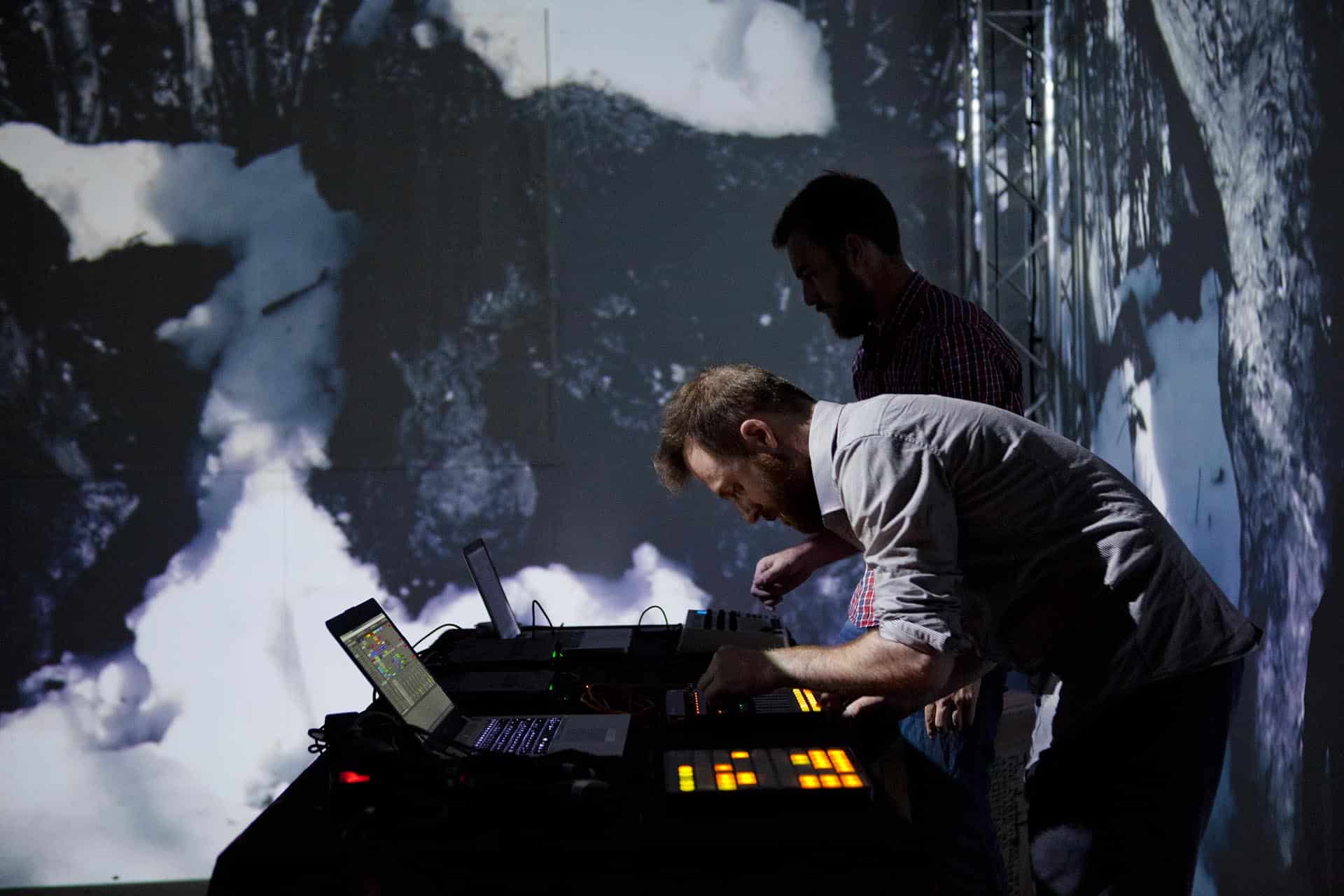Romain Constant, I am an artist, electronic musician, composer, and sound designer.
I find in digital music and electronic sounds a true musical identity, a rich, unique, and limitless composition potential. I place great importance on instrumental gesture, movements in interpretation, and sound timbre. I like to think of myself as a sculptor of sound materials.
My experience in composition and digital music allows me to create and work with other media such as generative video, sound installations, contemporary dance, music for film, or interactive sound design.
It’s important for me to give music a meaning again, by assigning it a creative function and considering sound as a primary material.
What was the project brief about interactivity, and the overall concept ?
[ACT] is an interactive sound installation that transforms the movement of spectators into an electronic musical instrument.
This work transforms the spectator into a living musical instrument, as if they were a synthesizer triggering and modifying sequences based on their movements. The expression space is an empty 6m cube made of tulle, with interactive video projections on the walls and floor.
With their movements, the audience creates music, like a sequence launch that evolves based on their placement, speed, or contact.
How did you approach it and what was your creative vision ?
The idea was to make club culture interactive, to enhance the dance floor, to give dancers the ability to control and master the music through social interactions and body movements.
Making the clubbing public actors of their night. In composing the music, I wanted to pay tribute to club culture by composing a piece inspired by Berlin’s electronic music from the 2000s, in a contrasting and massive aesthetic.
Can you give us some insight about your workflow to create interactive content and the tool you use ?
I quickly address the question of the music’s place and control by the public. Finding the right balance between pure participatory interactive composition (sometimes complex in musicality) or opting for a device configuration that quantizes, which gains in musicality but loses in interaction.
I use the real-time production software ABLETON LIVE and Max for Live, a modular programming software.
Is there a unique challenge Augmenta helped you overcome? Did you use a specific feature ?
I used Augmenta in another performance, which allowed me to prototype and create an interactive sound device for contemporary dancers very quickly. This made it possible to test the tools and choreographic directions quickly to realize the relevance of this technology.

What was the reaction to the finished product?
The feedback and reactions from the public are always surprising. We observed for [ACT] that people of all ages like to play, explore all the possibilities of interactivity, experience it, much more than we had imagined.
Is there something you want to add ?
I would like one day for [ACT] to be used by a musician on stage who wishes to capture the movement of their audience to compose and modify their concert in real-time. Augmenta is suited for this kind of artistic request and perfect for creating an interactive concert hall.



